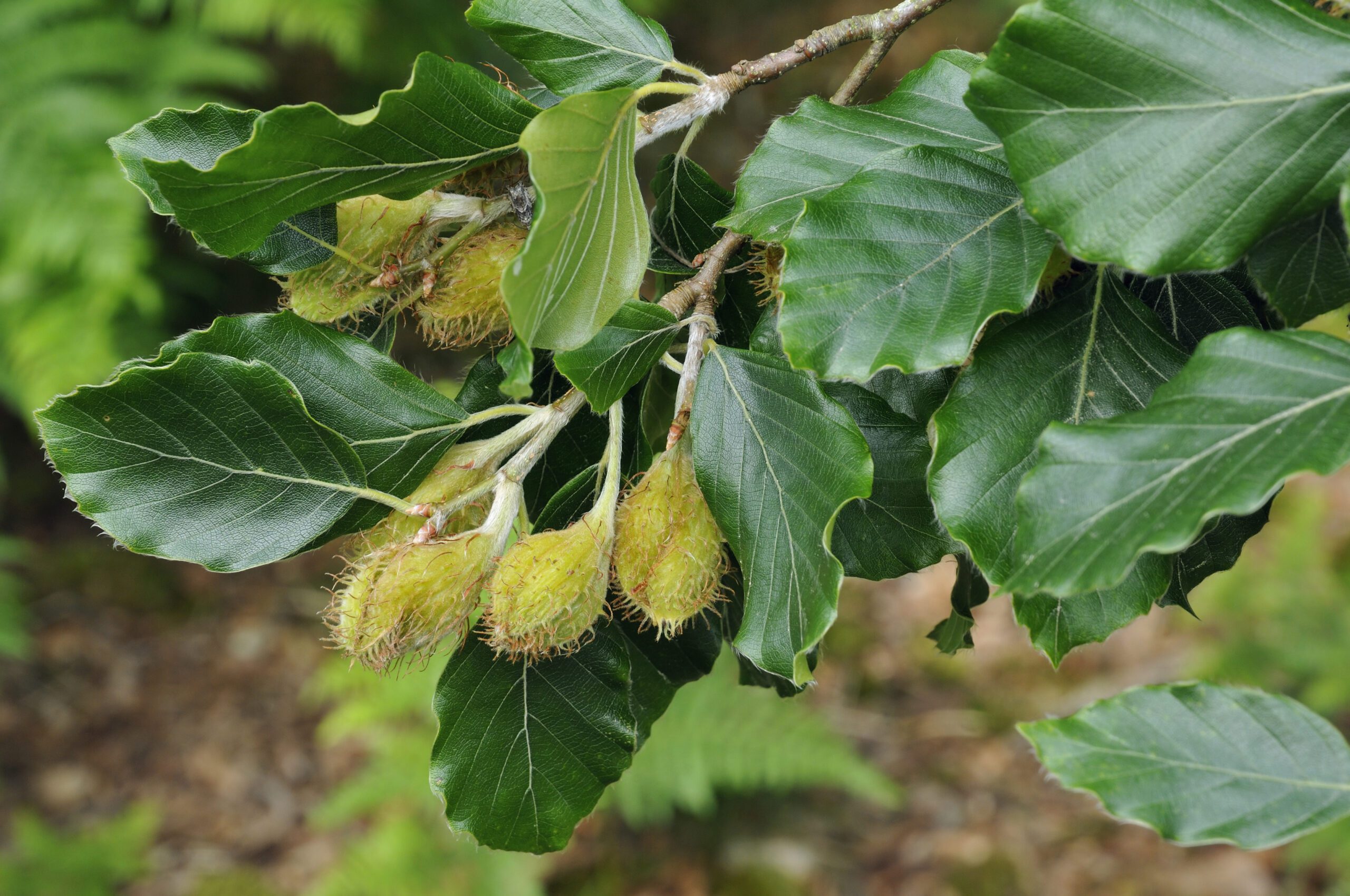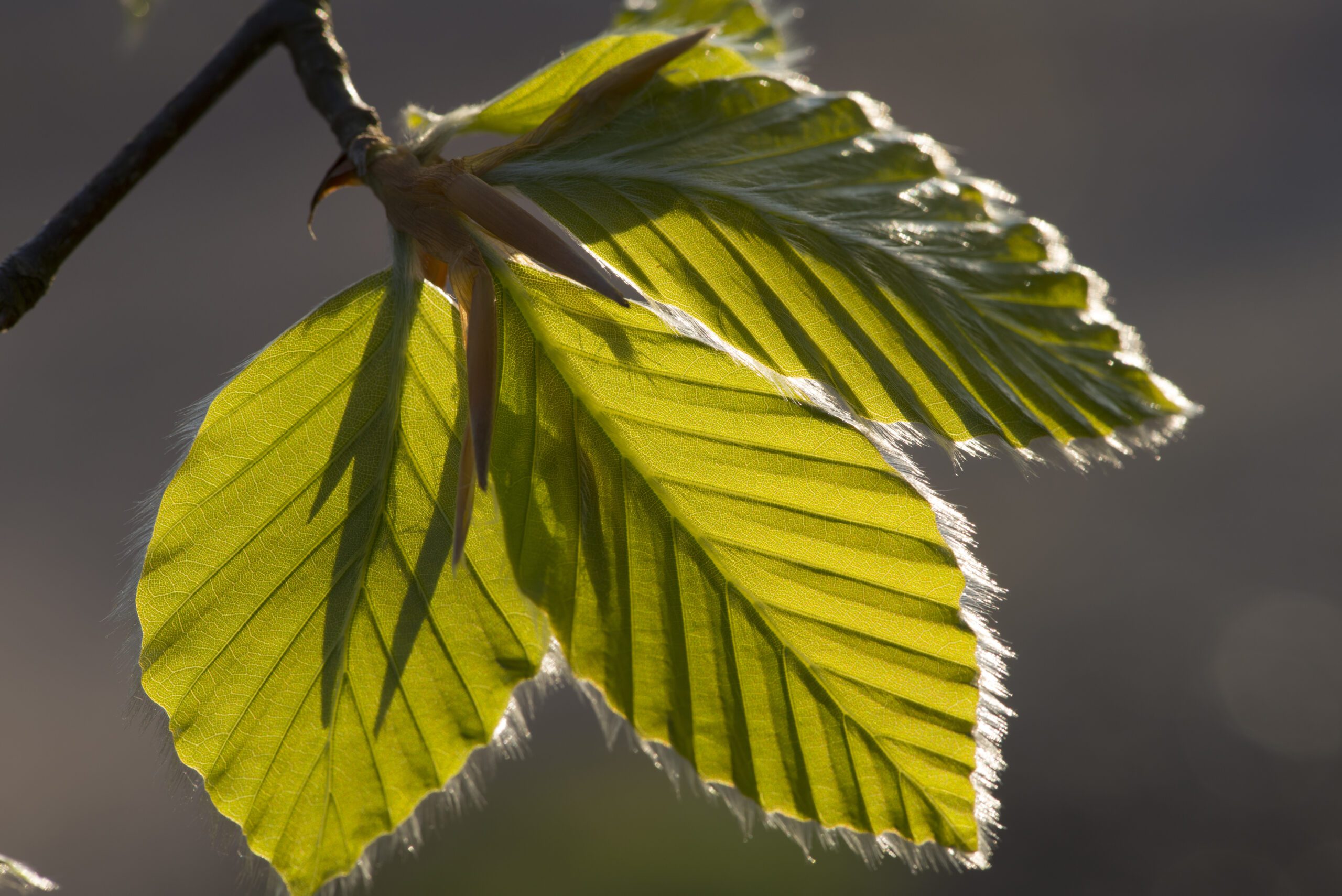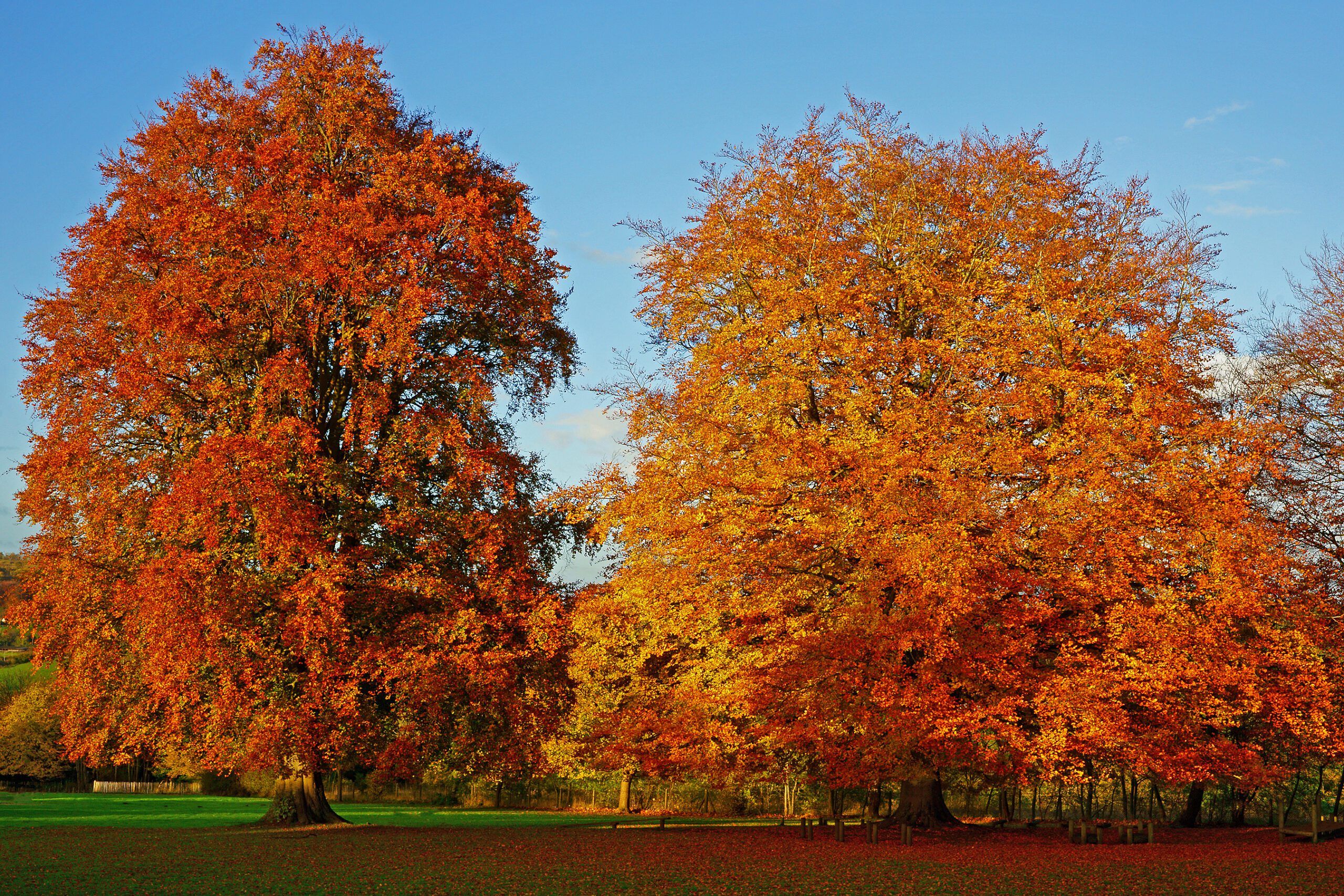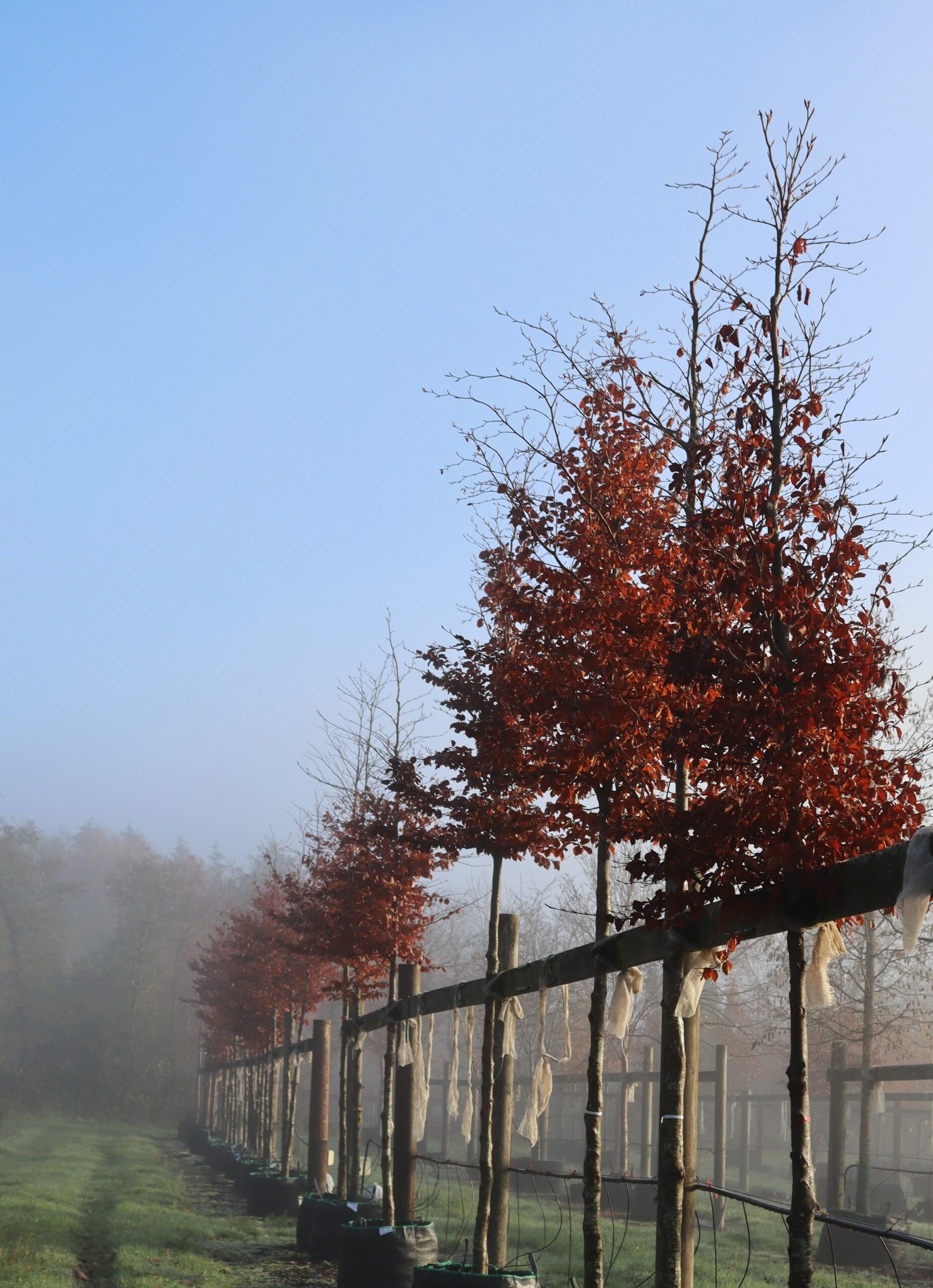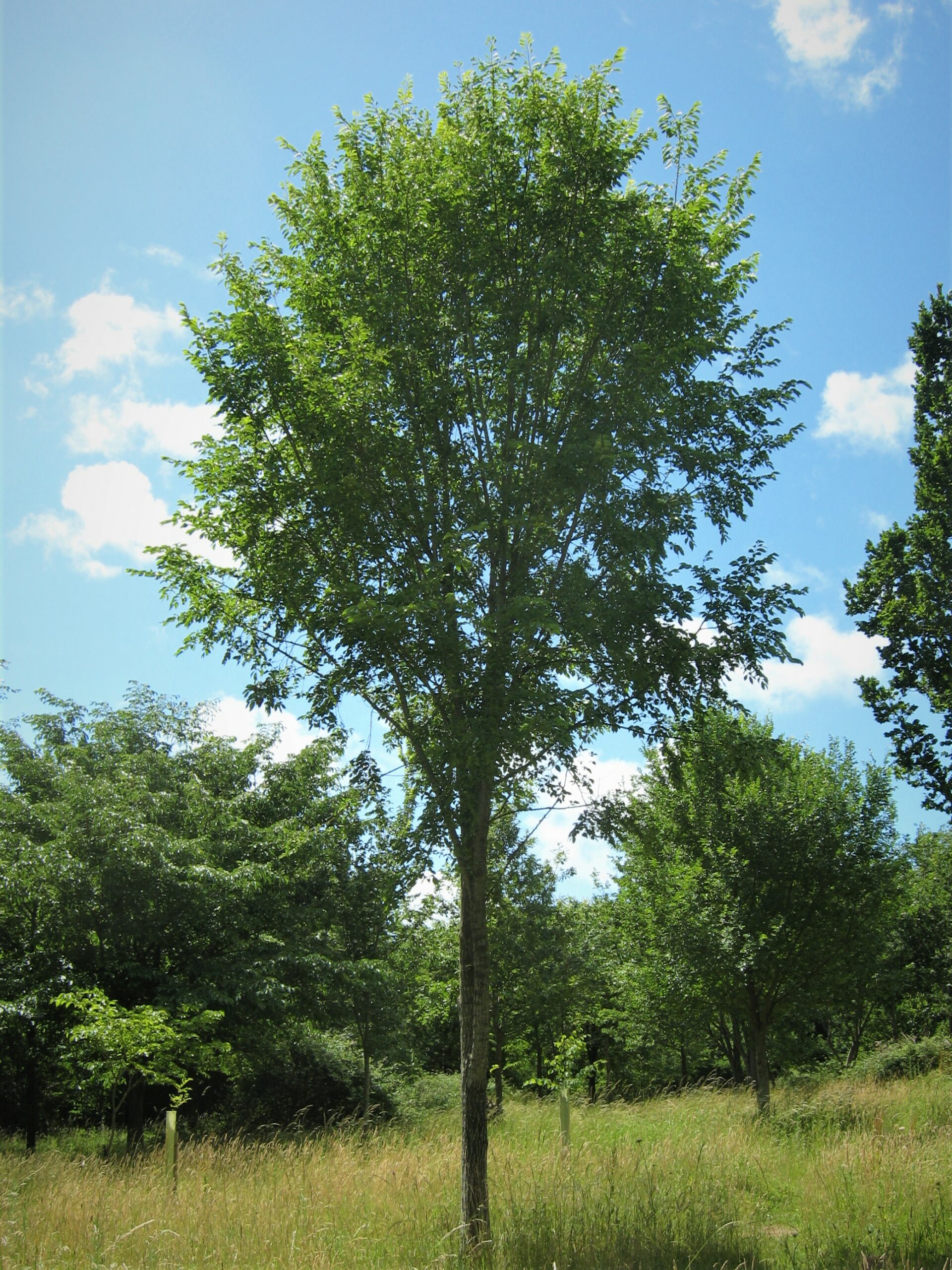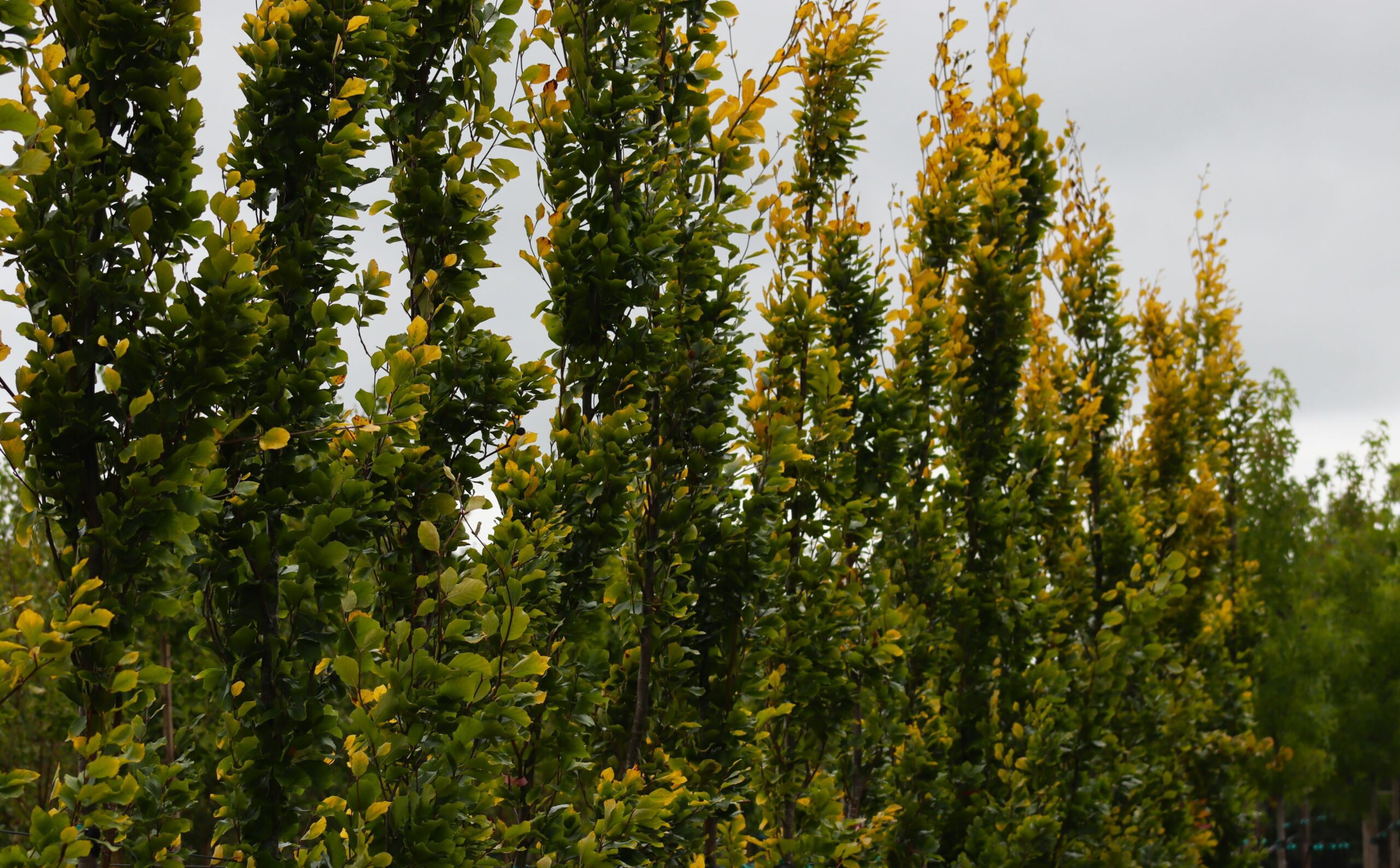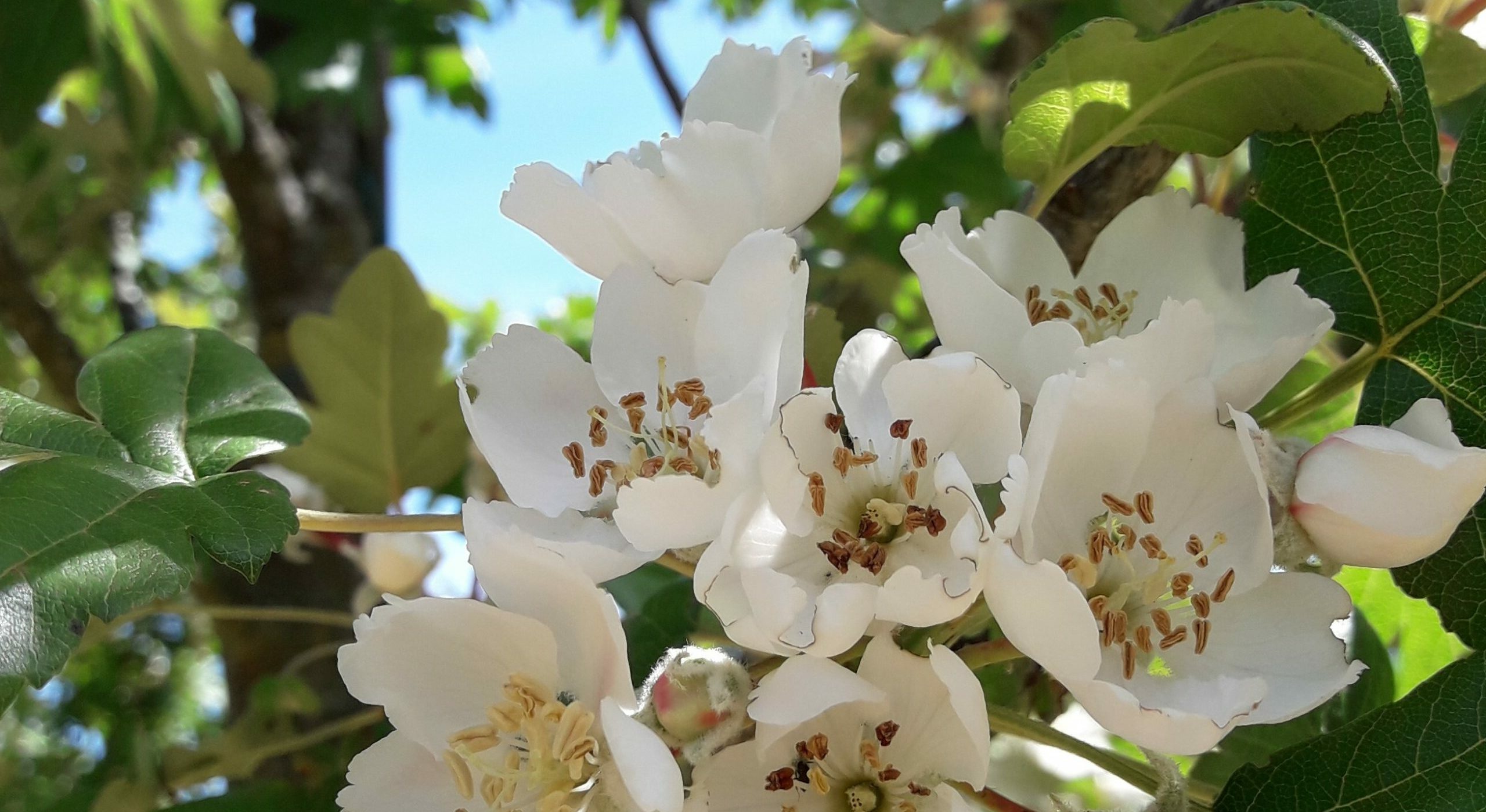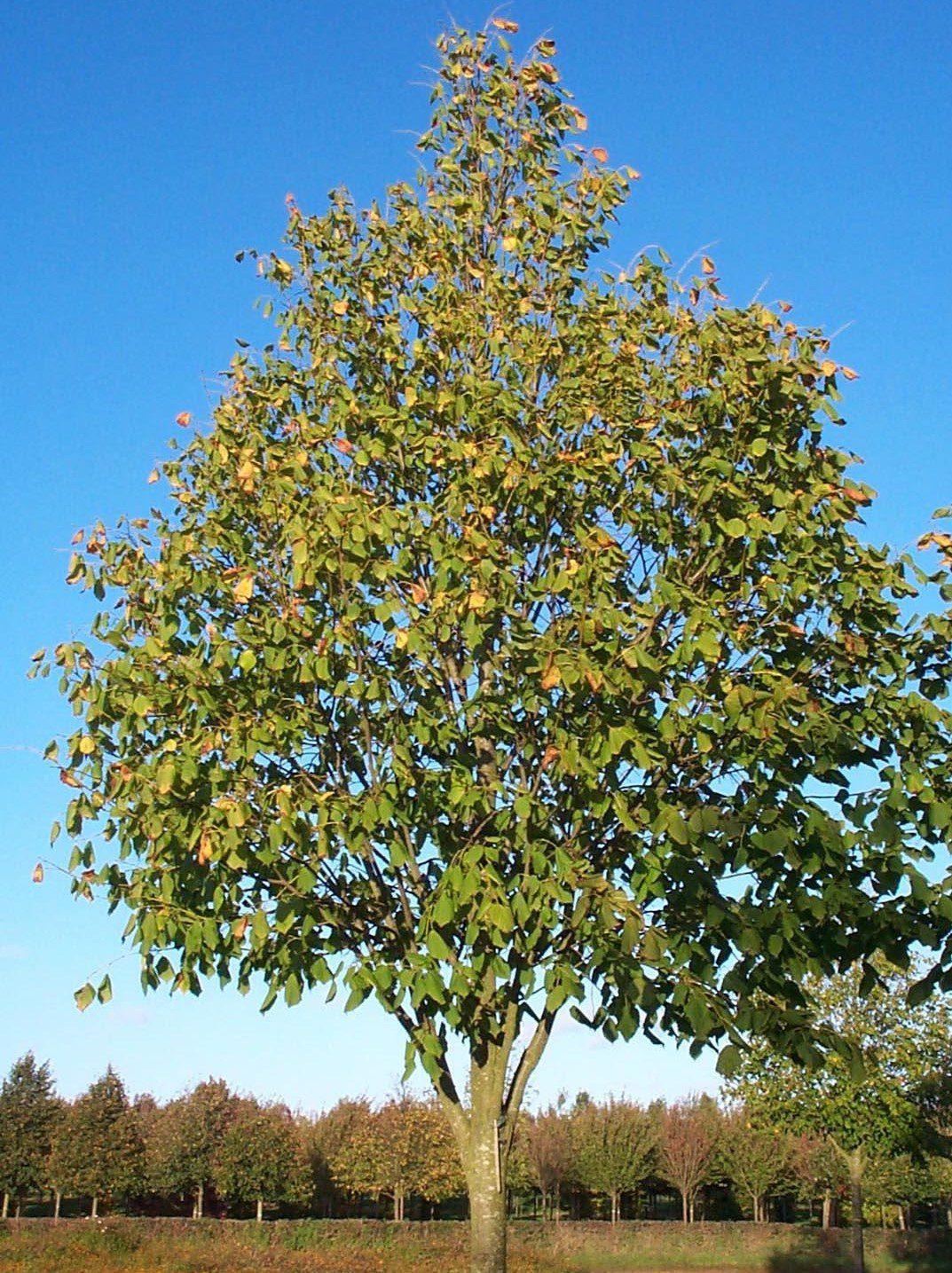Tree Information
Specialities
Tolerances
Wet Soil: Low
Dry Soil: Medium
Lime: Medium
The majestic beech, native to Southern England, stands as one of the most imperial trees in our landscape. Possessing a regal and imposing stature, it can attain mature heights of 35m, accompanied by an expansive, wide-reaching canopy. Its shallow roots thrive in well drained soil conditions, making it less hospitable for underplanting beneath its large canopy. While it thrives in temperate climates, it is less suited to urban environments characterised by hard surfaces that reflect and trap heat.
Bark of the tree boasts a silvery steel hue, lending a smooth and flawless appearance that extends gracefully along its robust branches. As spring emerges, the trees elongated buds unfurl into green leaves that gradually transition to a vibrant lime hue. The leaves feature pronounced, crinkled veins, creating a visually captivating display. As the seasons shift from summer to autumn, the foliage evolves into rich browns and yellows, eventually drying into crinkled leaves that persist throughout winter. The densely overlapping leaves limit the penetration of light and rain to the ground beneath.
The beech produces nuts, commonly referred to as Beech Masts, during specific years known as Mast Years, occuring approximately every 4-5 years. During these prolific periods, the tree yields an abundance of nuts that can blanket forest floors. Notably these Mast Years align with Oaks, collectively providing invaluable sustenance for local wildlife.
When cultivated as a standalone specimen, the Beech tree develops a robust and expansive crown that may cascade downward, occasionally touching the ground. It serves as an excellent choice for avenue planting by maintaining a vertical grown pattern and preserving a strong, central canopy.
Visit our Useful Resources for in-depth guides
Discover guides to help you with specifying your trees, caring for your trees and understanding the weights and dimensions of trees.
Useful ResourcesSize
Large
10m high x 6m wide after 25 years
Environment
Ideal as a solitary feature tree, or large avenue planting. While it thrives in temperate climates, it is less suited to urban environments characterised by hard surfaces that reflect and trap heat.
Foliage
Buds break in the middle of spring when green leaves unfold. These become a vibrant lime green with deep crinkle cut veins. In autumn, leaves bronze and become a russet brown, holding onto the canopy throughout winter.
Bark
Soft shining bark is a smooth silver grey. This runs through the branches which provides contrast to its wrinkled bright green foliage.
Resilience
Not demanding of soil type, it requires a free draining structure that does not waterlog. It succeeds well in lime alkaline soils and is hardy to winter frosts. Its shallow roots thrive in well drained soil conditions. Would naturally establish on hillsides, rather than in the wet clay soil at the bottom.
Wildlife
A fantastic woodland tree which is highly valued by wildlife.
Available As:
Semi-Mature
Make an Enquiry
Enquire below and speak to one of our expert team. For trades only, for general public enquiries click here.
Find Trees For Your Project
View Our TreesSpeak to a Member of Our Sales Team
Make an Enquiry
